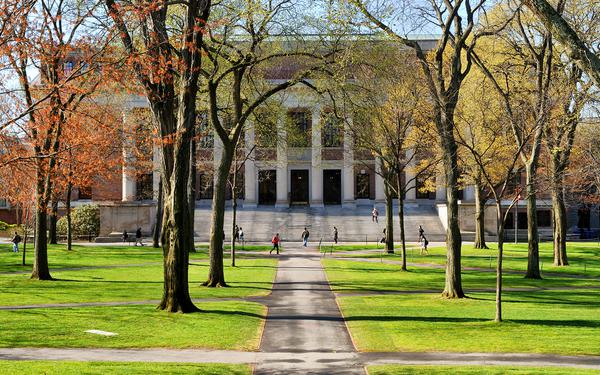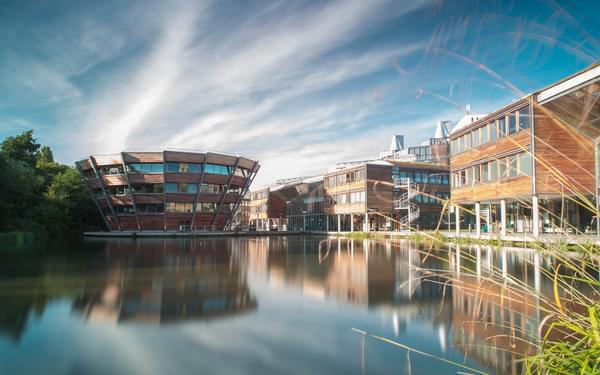Back to Articles
Can political parties bring higher education back from the precipice?
Scott Elliott \ 1st Jul 2024
Fee caps, underfunding and built environment challenges are taking their toll on the higher education sector. With a general election just around the corner, are the major political parties doing enough to revive what was once a bellwether of the UK's reputation on the global stage? Not according to Hydrock, now Stantec’s Scott Elliott.
The higher education sector in the UK is fast-approaching a crisis. Years of under-investment, combined with a growing need to adhere to the Building Safety Act, decarbonise real estate stock and respond to a changing climate, is putting universities across the country under pressure.
The 2024 General Election represents a chance for whichever political party comes to power to take steps to address this, but while manifestos from all of the major political parties have economic growth and a robust industrial strategy as core components, the missing piece from both the Labour and Conservative Party manifestos – and only partly addressed by the Liberal Democrats – is the role higher education plays in delivering these.
Estimated to be worth £130 billion to the UK economy, higher education provides much of the creativity, new research and ideas necessary for our economic growth, and is integral to developing the skills needed to take these bright new innovative ideas through to delivery.
Worryingly, the universities that contribute to this incredible economy-building asset are teetering on a financial cliff edge, with domestic student fees a big contributor. These fees were capped at £9,250 annually for undergraduates back in 2017 and this cap has not risen with inflation, to the point where, according to the Russell Group, an average domestic student now costs the HE sector £2,500 per year.
To combat this, UK universities have become increasingly reliant on overseas students - whose fees are uncapped - picking up the shortfall. However, the political discourse around illegal immigrants has had far-reaching policy implications. Unless you are a wealthy overseas student attending a top-ranked university, it is now very challenging to reach UK shores in order to study - and the majority of UK universities are suffering the consequences.
Compounding this is the fact that the sizeable real estates operated by many universities are in desperate need of investment. Ageing stock requires optimisation and decarbonisation if universities are to achieve their net zero goals, while the threats of extreme heat and cold, flooding and drought presented by climate change places greater need on universities to understand how a warming planet could affect the buildings and infrastructure on their campuses.
Additionally, adherence to the Building Safety Act post the Grenfell Tower disaster must be taken into consideration – initially only for high-rise residential buildings such as student accommodation blocks, but this remit could broaden in future years. Combining these challenges with the financial pressures faced by universities, one thing is clear: they all need to become accustomed to prioritising investment and doing more with less.

What assistance do the Labour and Conservative manifestos propose?
In order to avoid some of the UK's most prominent universities going into administration over the coming years, a detailed review is needed on where the shortfall is coming from, and how it can be reversed. Raise the fee cap? Subsidise courses for domestic students? Introduce more favourable student visas to retain talent? There are plenty of potential solutions, but some more realistic than others.
Labour suggests raising the student cap would be unpalatable, but doesn’t rule it out. The Conservatives however, seem keen to let the market decide, meaning low-quality courses will simply cease to exist. Arguably this wouldn’t be unreasonable, if the market conditions weren’t artificially inflated due to the aforementioned capped fees and rapidly declining access to overseas students.
Universities represent a massive opportunity in the nation’s industrial strategy, but significant investment in R&D funding programmes is needed to realise their potential. To this end, Labour suggests the scrapping of short funding cycles and increasing budget terms to 10 years, enabling universities to form meaningful relationships with industrial partners. This is a very welcome policy, though falls short to offer any further budgeting. Conservatives offer a 10 percent increase on current investment, increasing from current £20 billion levels to £22 billion.
Both parties need to go further. As part of driving economic growth, developing a bold industrial strategy and leveraging our internationally-recognised higher education system, we would like to see:
- A clearer position on welcoming overseas students to our universities, enabling the export of our education system and revenue generation.
- Subsidies for domestic students studying courses that feed into named UK growth areas, such as life sciences, advanced manufacturing, creative industries and artificial intelligence.
- Subsidies for courses that then provide the skillsets needed to build the surrounding infrastructure, such as housing, roads, railways, reservoirs, laboratories, digital infrastructure and gigafactories.
“At a more fundamental level, higher education institutions tend to be large energy consumers, but at the same time are under considerable pressure to decarbonise. Many of their estates are crumbling in places due to years of neglected maintenance, and the Building Safety Act post the Grenfell Tower disaster – while welcome and necessary – adds to the financial and operational pressures faced by institutions. Unfortunately, no manifesto references any form of lifeline in this regard.”
Parties failing to recognise the challenges facing higher education
The Liberal Democrats’ policies offer the most of all the main parties, but focus largely on social mobility, promising grants, Erasmus+ programmes, transparency on selection criteria and a statutory duty of care over students. An offer of three percent of GDP on R&D spending is on the table, but doesn’t move the dial from where it is currently set. Its manifesto represents a good social offer, but fails to tackle the major issue of rescuing a quietly suffering sector that has so much to give.
At polar extremes are the Green Party and Reform UK, with the Green Party suggesting they’d scrap fees and wipe graduate debt entirely, adding an additional £30 billion contribution to R&D. There’s little clarity to the costings behind such proposals. Conversely, Reform UK would look to ‘restrict undergraduate numbers well below current rates’, ‘stop backdoor routes to immigration through use of low-quality degree courses’, and ‘cut funding to universities that undermine free speech’.
Fundamentally, what any party fails to do is recognise the importance of the higher education sector in delivering a robust industrial strategy, nor offer a credible plan for how universities and their students are going to be supported over the coming political term, both financially and in terms of dealing with the climate and decarbonisation challenges faced by the built environment.
Should a major university go into administration, either in 2024 or beyond, the impacts will be far reaching at local, national and sectoral levels. Universities are often significant local employers and students half way through courses will be left in limbo. Confidence in the whole sector will be hit hard - and recovery could be an uphill battle.











